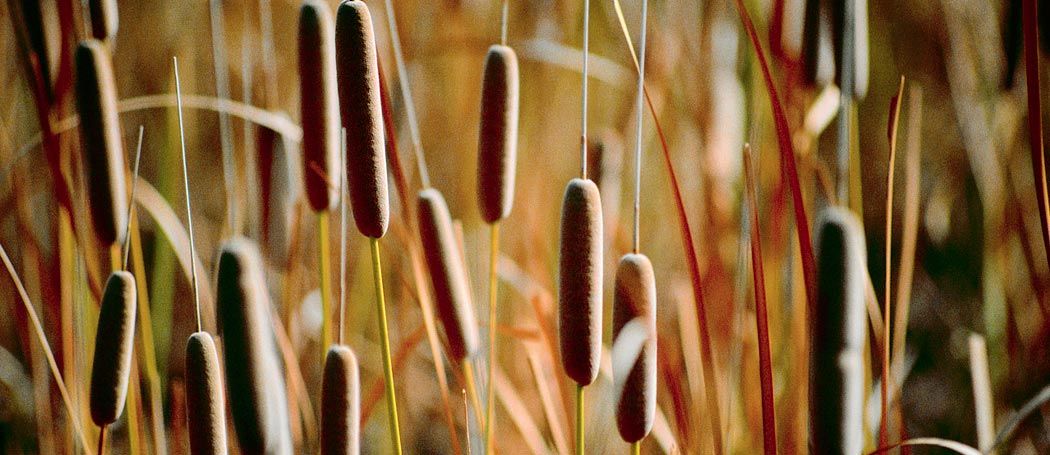Stormwater Nuisance Issues and Maintenance Solutions
There are many preventative measures that can be taken into account for a site-specific stormwater management plan, but even well-maintained and regularly inspected systems can be prone to nuisance issues. Some problems are elusive and could go undetected for a period of time while others are more blatant and are visible to the untrained eye.
Ponds are suitable habitats for varmint animals like nutria and muskrats. Basins with earthen embankments and slopes provide ideal habitats for the animals to create burrowing complexes, or “tunnels” below the ground surface. It can be more difficult to locate the muskrat burrows as they can be created both at and below the permanent pool. Groundhog and gopher burrows might be easier to spot since they will be above the permanent pool. Another indicator of this type of animal activity is the presence of “slide trails” on the slopes where the animals have created paths for commuting and dragging brush. If there are signs of any of the described varmint activity, the responsible party could set up traps depending on the population size, and then plug the burrows with a 50/50 mix of soil and concrete. In some minor cases it might only require packing in the burrows.
Beavers will build their dams in stormwater ponds or wetlands where there is usable biomass to construct their “huts.” There are a few different options a property owner could consider for correcting these problems, which include: trapping and/or relocating, dam and lodge removal, and using “beaver baffles. Trapping (and killing) beavers might evoke ethical opposition from some parties responsible for the stormwater system, but there is also the option to trap and relocate the beavers to another area that would be favorable for beaver communities. The problem with this option is it is more expensive and challenging (rather than trapping and killing the animal), and there are limited amounts of jurisdictions that are willing to accept relocated beavers. The responsible party could demolish and remove the beaver dams mechanically or manually. If the beaver dams are breached or have been damaged, beavers will typically move to another location. However, it is important to keep in mind that whatever features make the community appealing to one beaver will also make the area desirable to other beavers. Once one animal or family is removed, the pond or wetland will likely be re-occupied by other beavers, as young males are forced to find their own habitat areas each spring. The final option, through the use of proprietary beaver baffles, do not eliminate the beaver impoundments but rather minimize the size and impact the beavers will have on the pond or wetland. Beaver baffles create a manual method for changing water levels which make dam building more difficult.
Undesirable plant communities is another obstacle the responsible party of a stormwater system must face. A system with a diverse, balanced variety of plant species will promote biodiversity in the “eco-system” and could help prevent other problems from developing. Aquatic plants such as cattails, common reed, and algae will create monocultures and could crowd out the other crucial species that contribute to the health of the system and the surrounding environment. Cattails for example, rapidly multiply and are very conducive for mosquito breeding. Algaecides and herbicides are used to eradicate invasive plant species. Extreme care should always be used when resorting to this method and the responsible party should be familiar with local regulations for using aquatic applications and know the chemicals inside the chosen product to do the treatment. The most effective way to treat invasive plant species like cattails and algae is to perform the application at separate times throughout the growing season. This will help prevent choking out fish and other species in the system.
Do NOT attempt to perform any of the described corrective actions if you are not experienced or do not have the appropriate licenses/permits. Always use certified professionals when trapping animals or using chemical applications of pesticides, herbicides, or algaecides.
Thanks,
HK Landis IV
 Kenosha, Wis. Highway KR Regenerative Stormwater ConveyanceThe Root-Pike Watershed Initiative Network Kenosha County, and others worked with AQUALIS to design and implement an innovative solution for stormwater control along Highway KR.
Kenosha, Wis. Highway KR Regenerative Stormwater ConveyanceThe Root-Pike Watershed Initiative Network Kenosha County, and others worked with AQUALIS to design and implement an innovative solution for stormwater control along Highway KR. Durham, N.C. Sinkhole Leads to Stormwater System RehabilitationThe tenant on this property noticed a depression that opened to the ground below and notified the property owners.
Durham, N.C. Sinkhole Leads to Stormwater System RehabilitationThe tenant on this property noticed a depression that opened to the ground below and notified the property owners.

